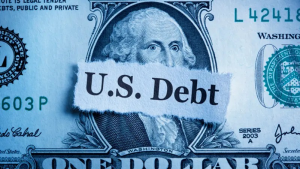PepsiCo What happened? On Monday, Morgan Stanley (NYSE:MS) upgraded PepsiCo (NASDAQ:PEP) to Overweight with a $190 price target.
What’s the full story? Morgan Stanley wrote that with PEP’s valuation at a 22-year low and more than three standard deviations below its relative NTM 10-year P/E average, a fundamental inflection should drive stock outperformance. This comes after PEP’s stock underperformed peers by 1,900 basis points since Q2 EPS. The bank is essentially in-line with consensus on Q1, viewing their Q1 forecast as conservative, so upside is more likely than downside.
The analysts expect the market to start looking ahead to a post Q1 inflection that is clearly on the horizon from their vantage point. For context, post Q2 of 2023 EPS, they downgraded Pepsi’s stock to an EW, concerned that valuation was priced to perfection and consensus/PEP guidance on OSG was clearly too high with an unrealistic volume rebound as pricing dissipated. Both of these issues have now played out.
Morgan Stanley wrote they would be aggressive buyers here ahead of a powerful inflection in H2 after PEP bottoms fundamentally in Q1, and returns to above consensus and peer OSG. They believe PEP’s valuation compression is overdone.
Overweight at Morgan Stanley means “The stock's total return is expected to exceed the average total return of the analyst's industry (or industry team's) coverage universe, on a risk-adjusted basis, over the next 12-18 months.”
How did the stock react? PepsiCo stock traded higher on the premarket session from $165.26 to $167.90, a gain of around 2%. PEP opened the regular session at $167.10 and closed at $171.26, a gain of 4.01%.
NuScale Power What happened? On Tuesday, Wells Fargo (NYSE:WFC) downgraded Nuscale Power (NYSE:SMR) to Underweight with a $4.50 price target.
What’s the full story? Wells Fargo analysts assert that the strong year-to-date (YTD) performance of SMR, which is up 207% compared to the S&P 500’s 8%, is linked to favorable developments for nuclear owners CEG & TLNE. However, the bank believes the investor excitement surrounding SMR is misplaced. The analysts cite several reasons for their caution: the absence of secured customers for SMR’s VOYGR product, the company’s weak financial condition with only about a year’s worth of cash runway, and the non-competitive pricing of VOYGR technology compared to other energy sources.
The bank’s price target of $4.50 per share is predicated on the assumption that NuScale’s annual New Plant Module (NPM) unit sales will escalate to approximately 30 units, or 2,300 MW, by the mid-2030s, despite no sales to date. This forecast is based on the premise that NuScale’s small modular reactor technology, which is currently leading among U.S. competitors, will eventually secure committed customers.
Lastly, with roughly $125 million in cash on hand at the end of 2023, NuScale’s financial stability is “precarious”, potentially hindering its ability to attract new customers.
Underweight at Wells Fargo means “Total return on stock expected to lag the Overweight- and Equal Weight-rated stocks within the analyst's coverage universe over the next 12 months.”
How did the stock react? NuScale stock traded materially lower on the premarket headlines from $$11 to $9.4, a decline of around 4%. SMR opened the regular session at $8.73 and closed at $6.58, an incredible clubbing down of 34.85%.
Riot Platforms What happened? On Wednesday, JPMorgan (NYSE:JPM) upgraded Riot Platforms (NASDAQ:RIOT) to Overweight with a $15 price target.
What’s the full story? JPMorgan’s upgrade comes as analysts there are now recognizing the company’s substantial operations in bitcoin mining and its potential for growth. RIOT, which runs the largest bitcoin mining facility in the U.S. at Rockdale and is developing a new 1 GW data center in Corsicana, stands out for its scale, strategic expansion plans, affordable power contracts, and financial resources.
The analysts believe that RIOT has a clearer growth trajectory compared to its competitors, who are often required to purchase smaller sites or develop new facilities to meet their near-term hashrate goals.
JPMorgan’s $15 price target set for December 2024 is based on a conservative bitcoin price assumption of $60,000, suggesting a 35% upside from the current stock levels.
Overweight at JPMorgan means “over the duration of the price target indicated in this report, we expect this stock will outperform the average total return of the stocks in the Research Analyst’s, or the Research Analyst’s team’s, coverage universe.”
How did the stock react? Riot Platforms stock traded higher on the premarket headlines from $11.09 to $11.32, a gain of around 2%. RIOT opened the regular session at $11.75 and closed at $12.40, a gain of 11.81%.
Kingsoft Cloud What happened? On Thursday, Citi upgraded Kingsoft Cloud (NASDAQ:KC) to Buy with a $5.00 price target.
What’s the full story? Citi analysts wrote that KC has begun generating revenue from AI in the second half of 2023, with expectations for significant growth in 2024. This is partly due to the anticipated large-scale rollout of WPS AI by KOS. Additionally, the upcoming launch of Xiaomi’s first EV, the SU7, on March 28, is likely to boost cloud demand, they wrote. KC’s fourth-quarter results of 2023 aligned with consensus revenue and adjusted earnings, showing a positive trend in revenue growth and EBITDA margins, attributed to the optimization of low-margin businesses and efficiency improvements.
Looking forward, Citi maintains its revenue estimates for KC but has increased its margin forecasts for 2024 and 2025, anticipating continued revenue growth and margin enhancement as AI-related revenues rise. The analysts’ outlook is buoyed by better-than-expected margin improvements, suggesting a robust financial trajectory for KC in the coming years.
Buy at Citi means “Buy (1) ETR of 15% or more or 25% or more for High risk stocks."
How did the stock react? Kingsoft Cloud shares spiked from $3.60 in the premarket to 3.88, only to give it all back in the regular session. KC opened the regular session at $3.82 and closed at $3.63, a decline of 2.94%.













